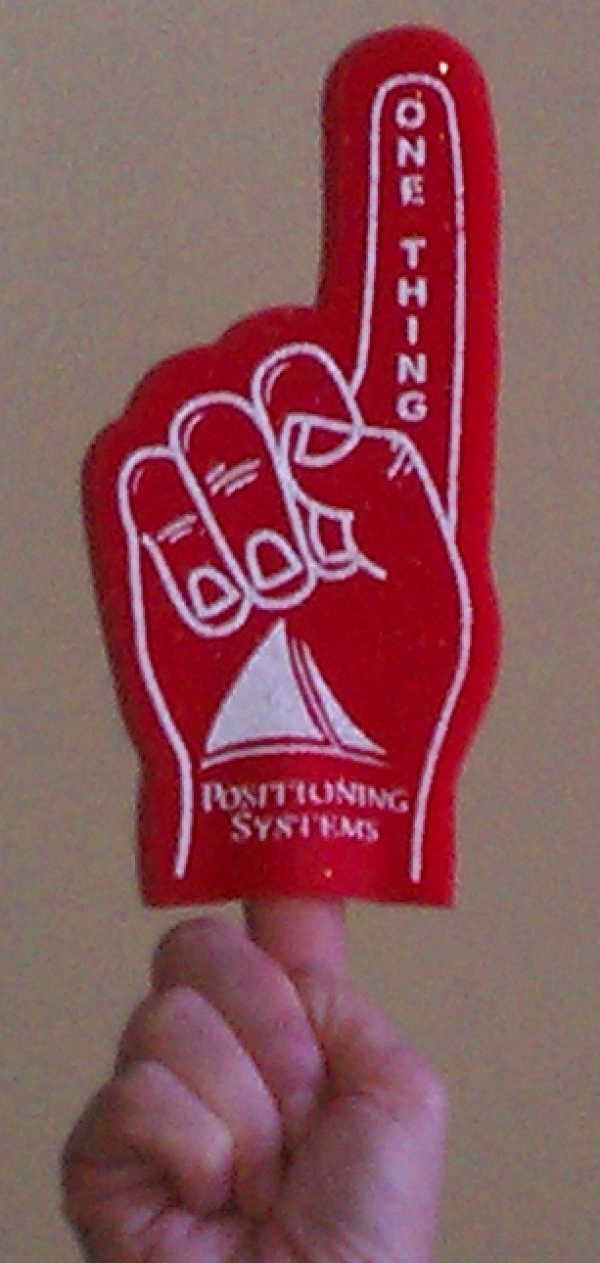If you’ve been following my blogs you know that I’ve dedicated several to the “Less is More” concept and specifically the book Essentialism. Author Greg McKeown dives in to how so many of us continue to pursue more and believe we can have everything, ignoring the waste and dissatisfaction that this endless pursuit leads to. In our Gazelles best practices we teach our customers to focus on a One Thing Priority for the year and quarter. The word priority has changed in definition through the early 1900’s. Let’s explore priority’s origin and the value of One Thing Priority can have in your business and life. 
The word priority came into the English language in the 1400s. It was singular.
It meant the very first or prior thing. It stayed singular for the next five hundred years. Only in the 1900s did it pluralize and with it the start of talking about priorities. Illogically, did we reason that by changing the word we could bend reality? Somehow we would now be able to have multiple “first” things.
What has happened with the pluralization of priority?
Many things. All lead to a lack of focus and clarity.
In fact Gazelles and I have been guilty of pluralizing the idea of priorities.
If you look at our One Page Strategic Plan you’ll see room for up to five rocks or priorities.
I won’t excuse this. I will emphasize that with every customer I work with I maintain and have them commit to ONE THING being the priority for the quarter or year. We place special emphasize on this, yet I can’t deny that when you begin to work on Quarterly Priorities and have more than three, many times by the time a quarterly review comes around, the leadership team has lost sight of what that One Thing is.
Because of that we’ve began reminding the leadership team at the beginning of each weekly meeting what our One Thing is for the Quarter and the Year. It may be as simple as placing the priority on the top of the document we record the weekly and monthly meeting on. (Google Doc’s works great for this, particularly for having everyone insert their notes/discussions prior to the meeting time.)
The difference between having one priority and having several is dramatic. While it’s still important to have a balancing priority, it might be better if we begin to call every other goal or target for the year and quarter something other than a priority.
Having multiple priorities muddles the focus and clarity of your One Thing. While we want and need to get more than One Thing done, in my experience achieving the One Thing always pulls multiple other efforts along with it at a much faster pace than having no priority at all.
Please forgive me for referring again to my struggle with Leukemia; however it reveals an important facet of the word priority and the clarity and focus that having a simple One Thing mentality can provide.
I’m not the only one to have miraculously survived a fatal diagnosis of cancer. Andy Grove of Intel certainly made discovering a remedy for his prostate cancer a priority when he discovered it in 1994.
The urgency and immediacy of cancer provides a whole new meaning to the word clarity on what your priority is.
You make clear concise decisions on what you should and should not be doing. Once you determine the path to follow to eliminate or recover you never, and I do mean never steer from the path of activities that will resolve it.
Imagine if your leadership team, your entire business would have that same resolve to achieve its priority?
Here’s my suggestion for you and your business. Ask yourself when you sit in your next planning meeting for either the year or quarter, will your people have the resolve to attack the priority you choose with the same determination and commitment that a patient facing a death sentence of cancer would?
Ask yourself whether or not the activities that you choose to support your priority are 90% or more on target of attaining that measurement?
Make sure your priority has a metric to measure and answer the following questions:
“HOW WILL WE KNOW WHEN WE’RE DONE?”
“How will we know when we have succeeded?”
Cancer is a pretty yes or no proposition. Either you have it or you don’t. In my case health and remission are still a top priority. My two year anniversary of bone marrow transplant is coming September 5th. Reaching that date will mean I will be in full remission. That’s an accomplishment I’m proud of.
What event, what condition, what priority has your business approached with that amount of resolve?
Have you made something the “very first” ever in your organization? Have you had that type of commitment, resolve and determination to achieve anything?
What’s the One Thing that would impact your business the most in the next quarter, year?
Do you believe you could achieve it if you had the type of commitment Andy Grove and I had to beat cancer?
Is it time you reversed your definition of priority and focused on One Thing?
For helping achieve the level of discipline required to achieve your Priority. Contact Positioning Systems or one of the Gazelles Coaches at GICoaches.com.

-resized-600.jpg?width=165&height=347&name=one_thing_(ps)-resized-600.jpg) You should establish your One Thing during your annual strategy and planning meeting each year. One Thing is a concept of focus. It should be the One Thing that if you could accomplish nothing else it would impact your business the most. While these events occurred in 2008 and I’ve experienced the extraordinary value of this discipline many times over during my years of coaching, it’s a valuable story to repeat to help others realize the significant impact that establishing One Thing as your top priority can bring to your organization. Here is that story again:
You should establish your One Thing during your annual strategy and planning meeting each year. One Thing is a concept of focus. It should be the One Thing that if you could accomplish nothing else it would impact your business the most. While these events occurred in 2008 and I’ve experienced the extraordinary value of this discipline many times over during my years of coaching, it’s a valuable story to repeat to help others realize the significant impact that establishing One Thing as your top priority can bring to your organization. Here is that story again: Mike has built a system to ensure he receives a steady stream of new inquiries for jobs in his area. It’s a credit to him and to the principle of focus. What you focus on increases. It’s why the
Mike has built a system to ensure he receives a steady stream of new inquiries for jobs in his area. It’s a credit to him and to the principle of focus. What you focus on increases. It’s why the